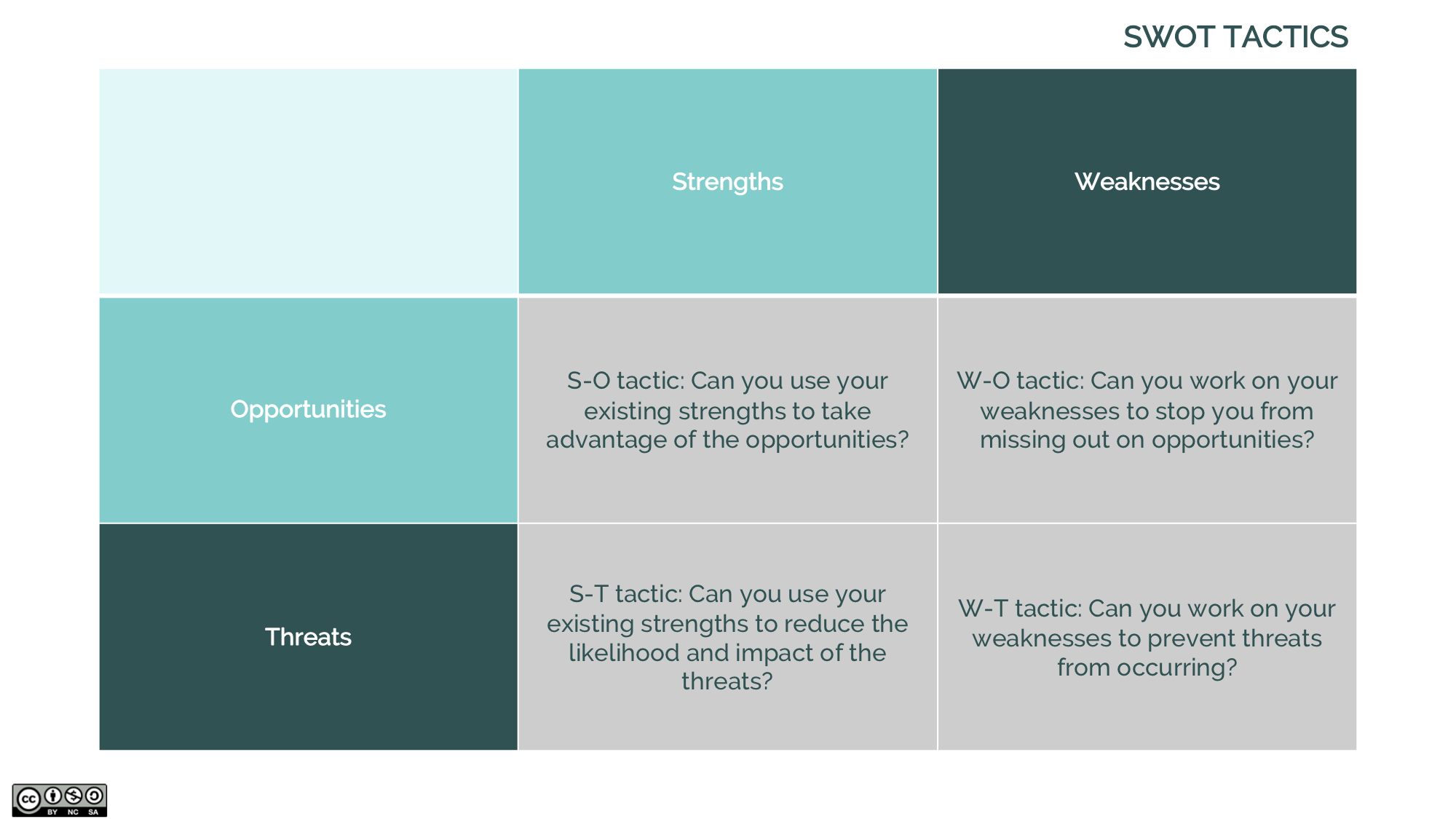Executive Summary
An innovation challenge describes the tactic that your business uses in order to obtain a certain outcome such as serving a customer better or operating more efficiently. This factsheet emphasises the importance of analysing both the internal and external business environment in order to prioritise key focus areas of innovation. It also proposes a step-wise approach for deriving innovation tactics and defining an innovation challenge.
What is an Innovation Challenge?
As already mentioned above, an innovation challenge describes the tactic that your business adopts in order to achieve a specific positive outcome.There are many tactics a business can choose from to achieve the specific outcome, so when deciding which one to go for remember that the overall goal is to obtain a competitive advantage; in other words, being better, faster or cheaper than your competitor or the competing solution that your customer is using at the moment.
Defining the particular innovation challenges that your business faces first requires an in-depth analysis of your internal and external business environment (for example, a SWOT analysis). While some innovation challenges seem obvious for businesses in all sectors (e.g. equipping your business to stay up to date with digitisation), others are less obvious or are limited to specific sectors or businesses. It is therefore important that you as a business identify and define your own specific innovation challenge.
For defining an innovation challenge that will allow you to develop a competitive advantage in the market or increase your overall impact, you should first do an analysis of the opportunities and threats that your external business environment presents. Opportunities can be for example: untapped customer needs that make room for you to sell new products or technological advances which in turn, allow you to operate more efficiently. An example of threats can be: competitors entering the market and stealing market share or climate change harming the supply of your raw materials.
You also need to analyse the strengths and weaknesses that your business idea or business model show. Strengths allow you to tap into opportunities and protect your business from threats. As part of an innovation challenge, you may choose to build on and develop these strengths. Weaknesses on the other hand, need to be overcome because they hinder your ability to tap into opportunities and are loopholes that make your business vulnerable to threats.
In summary, addressing your strengths, weaknesses, threats and opportunities is what your innovation challenge is all about. Click on the following hyperlink to find out how you can carry out this analyses on your business idea and your business model .
How to choose your Innovation Challenge
The table below shows an overview of the tactics that you can use to obtain competitive advantage. The easiest tactic is exploiting a strength to make use of an opportunity or to mitigate a threat on the business. For example, you might have identified that there is a big opportunity in reducing your logistical costs by outsourcing the collection of waste to local waste pickers. Your strength is that your processing plant is in a central location so that waste pickers can easily find you. Your tactic would therefore be to match one of your strengths with one of your opportunities.
Another tactic is working on a weakness to be able to exploit an opportunity. For example, if your processing plant is too far away for waste pickers to easily reach you, you might have to operate a collection point in a more central location. This tactic is about adapting one the weaknesses that us currently getting in the way of an opportunity in order to exploit this one.
Likewise, there are tactics for dealing with threats. You can either use one of your strengths to cope with a threat or work on one of your weaknesses to prevent a threat or mitigate its impact on the business.

Table 1: Adapted from FURGISON, L. SWOT Analysis Step 5: Developing Actionable Strategies: https://articles.bplans.com/swot-analysis-challenge-day-5-turning-swot-analysis-actionable-strategies/ [Accessed: 22/12/2020]
Choosing the right tactic depends very much on the results of your analyses and the desired outcomes of your innovation challenge. To choose your tactic, you can follow this stepwise approach.
- Write down the main strengths, weaknesses, opportunities and threats that you have identified in the previous factsheet on post-its. Colour code them or indicate on the post-it whether it is a strength, weakness, opportunity or threat.
- Print out this worksheet or draw it on a large flip-chart and place the post-its in their respective boxes in the first row and column of the table.
- Start by looking at your opportunities and see if you can match them with existing strengths and if you can, place your opportunity and strength post-its in the S-O tactic box. If you cannot match an opportunity with a strength, look at what weaknesses you need to convert to make use of that opportunity and place the two post-its in the W-O tactics box. Follow the same procedure with the threats.
- Once you have identified all possible tactics, go through them again and remember that the overall goal is to obtain a competitive advantage. If making use of a specific opportunity or mitigating a threat does not allow you to obtain a competitive advantage for example, there is no point working on the weakness or developing a strength. Prioritise your tactics by defining which one will allow you to obtain a better competitive advantage.
Formulate your Innovation Challenges
Now that you have come up with several tactics for making use of opportunities and coping with threats, it is time to define your innovation challenges. These are the challenges you will solve by innovating your business model. Frame the challenges using the “how might we…” format, which frames the context clearly, while also leaving options for solutions open (BOARD OF INNOVATION, 2020).
Describe what you want to achieve (objective), the subject to be influenced or affected and how you intend to innovate your business model to achieve this objective.
This worksheet provides guidance on how to formulate your innovation challenge adopting the “how might we…” format.
- “How might we keep our logistical costs down by engaging waste pickers in the collection process?”
- “How might we create new revenue streams from rural subsistence farmers by speeding up their experience of sourcing water and thus creating willingness to pay?”.
Board of Innovation
An online platform that transforms leading innovation management theory into hands-on, easy-to-use, actionable innovation tools which can be downloaded for free.
(2020): https://www.boardofinnovation.com/tools/ [Accessed: 23.12.2020]
